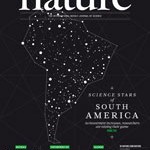 The gut microbiomes of young children appear to fail to fully recover from the trauma of early-life malnourishment, even after they are treated with more-complete diets, according to a 2014 study published in Nature.[1]
The gut microbiomes of young children appear to fail to fully recover from the trauma of early-life malnourishment, even after they are treated with more-complete diets, according to a 2014 study published in Nature.[1]
In this paper the research team led by Jeffrey Gordon of the Washington University in St. Louis sampled the gut microbiomes of healthy and malnourished children in Bangladesh and discovered that the microbiomes of children who were underfed and whose diets lacked essential nutrients looked less like those of adults and more like those of younger, healthy children.
The findings present a possible explanation for the commonly observed complications that malnourished children suffer even after they are treated with a standardised food regimen, including stunted growth, cognitive delays, and immune system problems. The researchers have suggested that the immature gut microbiomes of malnourished children may be partially responsible for some of these long-term impairments.
Degraded ecosystems are notoriously difficult to restore. Often, such efforts focus on restoring environmental conditions and eliminating unwanted species then waiting for assembly processes to play out ‘naturally’ to restore the desired community.[2] But degraded communities can be resistant or resilient to change, and although host health can be restored, youth cannot. Meaning that the time it takes to restore optimal function may be very costly in terms of human health and functionality.
How did they do it?
The researchers collected monthly faecal samples from a dozen healthy children in Mirpur—an impoverished region in the city of Dhaka—for the first two years of their lives. By the this time frame most children develop gut microbiomes that are similar to those of adults. The researchers used the gene analytical 16S ribosomal sequencing to identify bacterial taxa in the children’s faecal samples, narrowed the results down to 24 key taxa, and created a mathematical model to analyse the data. They then applied that model to 38 other healthy children and used the results to develop two measurement tools, which the researchers labeled “relative microbiota maturity” and “microbiota-for-age Z-score.
The researchers used these measurements to refine the model, and then applied the model to study the microbiomes of 64 severely malnourished children before, during, and after they were assigned to one of two diets meant to treat malnutrition. The first was a standardised, ready-to-use therapeutic food called Plumpy’nut—a peanut-based treatment for malnutrition that is widely used by non-governmental organisations around the world. The other diet consisted of low-cost, locally produced calorie-rich foods, khichuri and halwa. Children in both treatment groups gained the same amount of weight post-treatment, but they remained underweight and fell short of typical height measurements.
The team found that before and immediately after treatment, the gut microbiomes of children in both malnourished groups were immature compared to healthy controls. After a month, the children’s microbiomes improved dramatically, but that improvement did not last for more than a few months. At four months, the microbiomes of both malnourished groups appeared to regress to a less-mature state, and the microbes in their guts were less diverse than were those collected from healthy children. Diversity is increasing seen as a strong marker of health and metabolic functionality.
The researchers repeated the experiment in a group of healthy children from Malawi and found a similar maturation and shift in gut microbes as the children grew older.
The team is now studying the microbiota of children in several countries, including South Africa, Brazil, and Peru. The researchers hope the results bolster their initial findings from Bangladesh and Malawi in the coming months. These studies are part of a larger effort to develop bacteria-mediated interventions that can restore gut microbiome function in malnourished children.
References
[1] Subramanian S, Huq S, Yatsunenko T, Haque R, Mahfuz M, Alam MA, Benezra A, DeStefano J, Meier MF, Muegge BD, Barratt MJ, VanArendonk LG, Zhang Q, Province MA, Petri Jr WA, Ahmed T, Gordon JI. Persistent gut microbiota immaturity in malnourished Bangladeshi children. Nature. 2014 Jun 4. View Abstract
[2] Suding KN, Gross KL, Houseman GR. Alternative states and positive feedbacks in restoration ecology. Trends Ecol Evol. 2004 Jan;19(1):46-53. View Abstract





